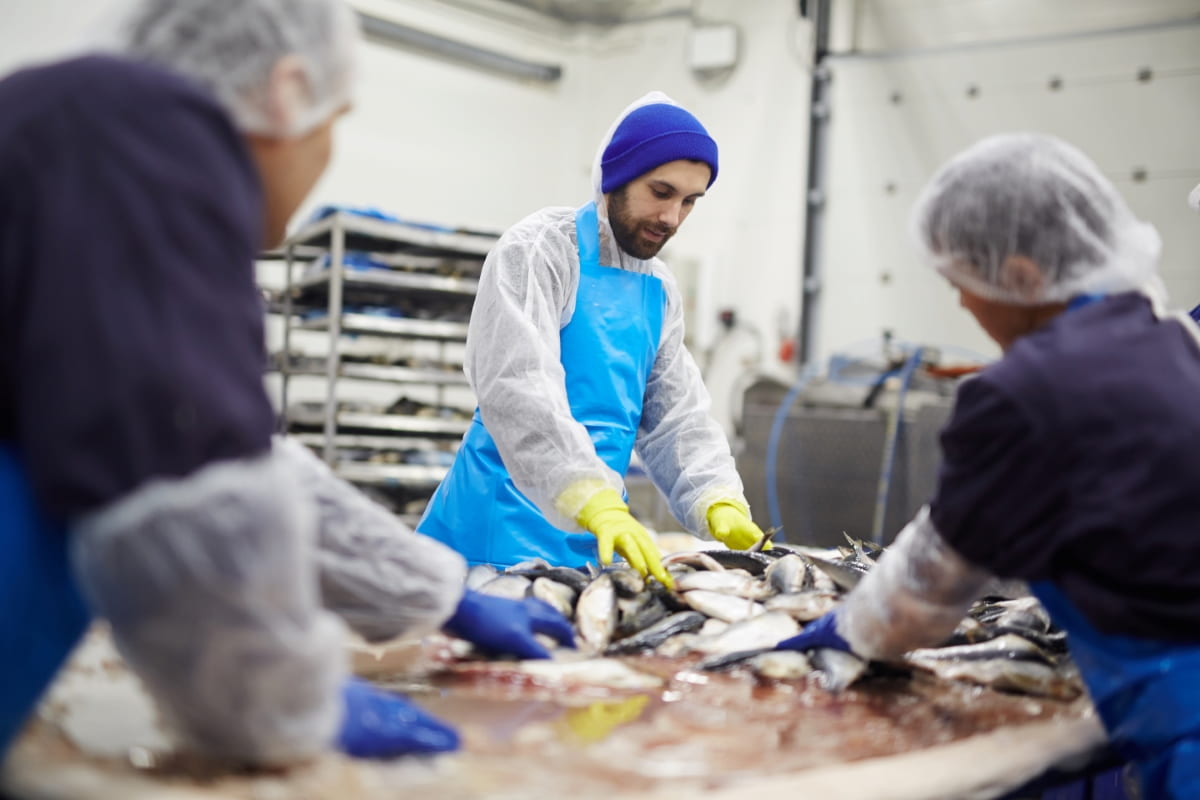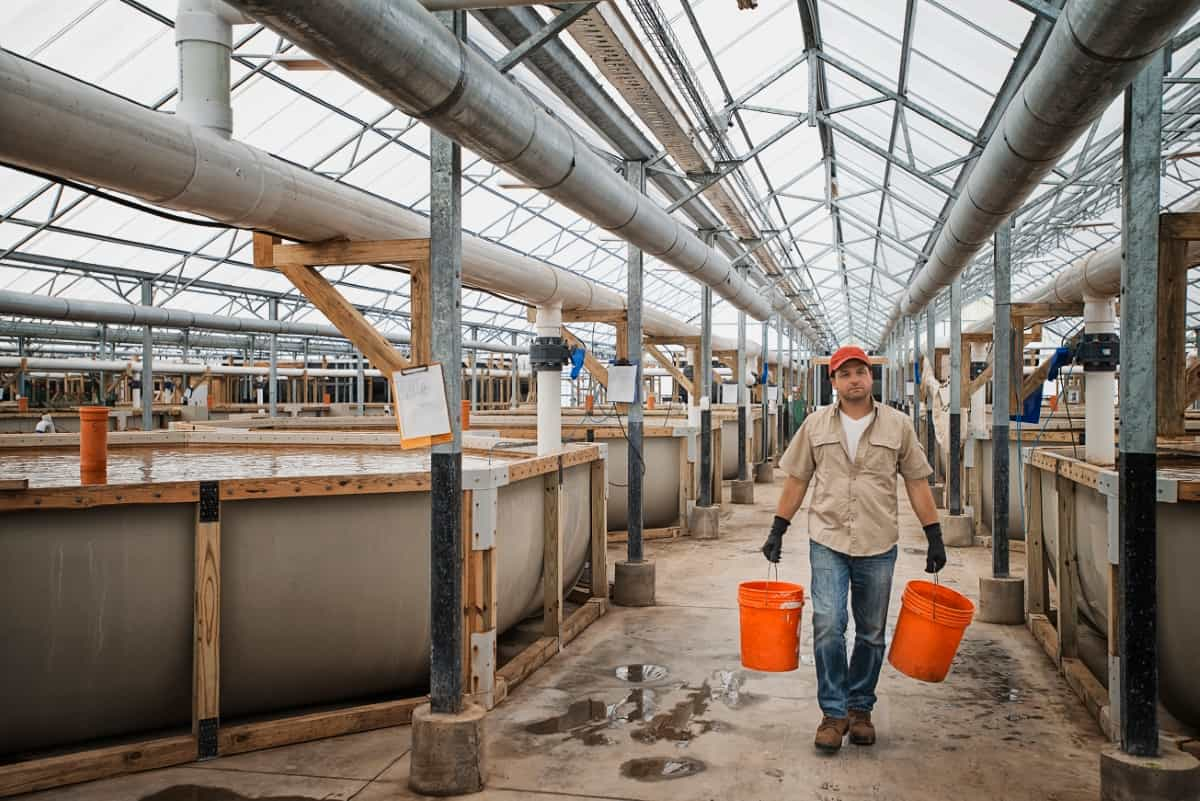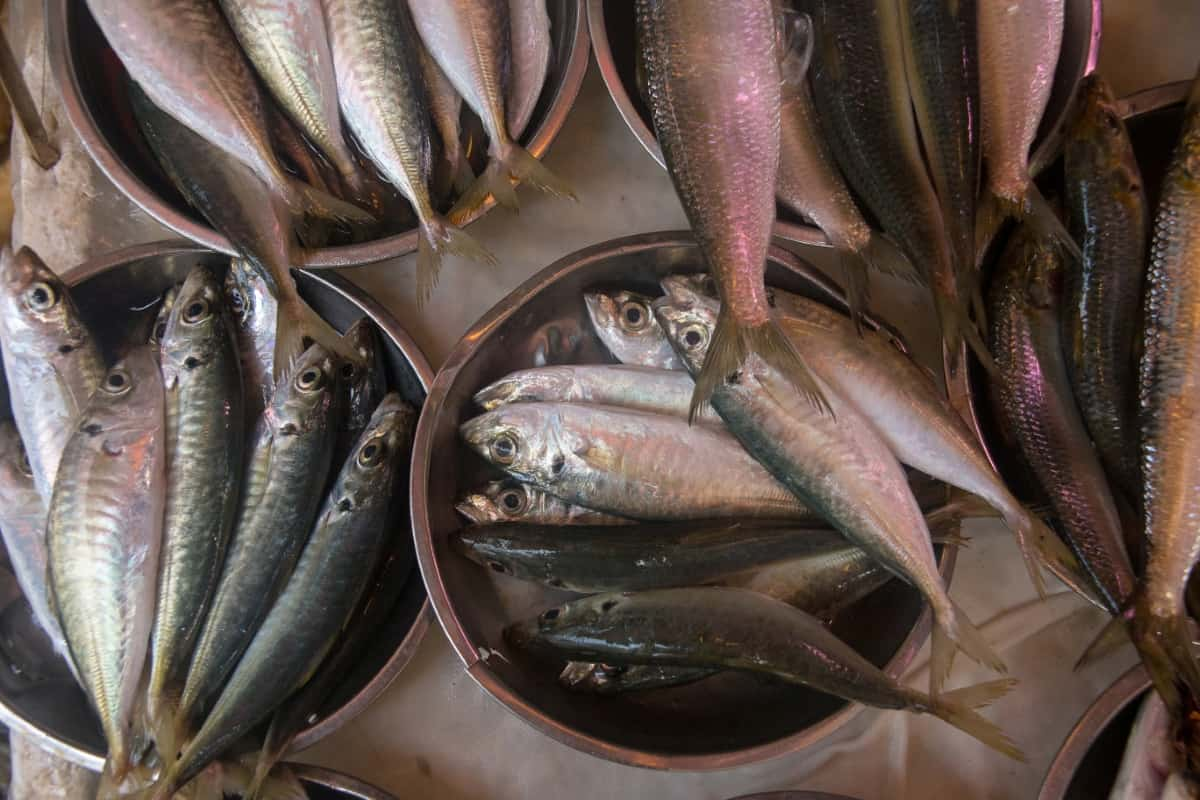Fish farming has emerged as a lucrative venture, offering various opportunities for entrepreneurs to explore. In this article, we will dive into 10 value-added business ideas for fish farmers, focusing on low-investment yet highly profitable ventures.
Whether you are contemplating a fish-selling business plan, seeking an example of a fisheries business, or wondering how to start a fish-selling business, these innovative ideas can elevate your commercial fishing business to new heights. Let’s explore the diverse avenues within the industry of fish farming that can boost your fish business profit.
10 Value-Added Business Ideas for Fish Farmers
Fish Processing and Packaging
One promising avenue for fish farmers is fish processing and packaging. By adding value through cleaning, filleting, and packaging fish products, you can cater to a broader market. Invest in modern processing equipment and hygienic packaging to enhance product quality. The profit margin in fish processing and packaging can range from 20% to 40%, making it a financially rewarding venture.

Aquaponics Farming
Venturing into aquaponics farming is another way to diversify and maximize profits. This novel methodology combines aquaculture and hydroponics, establishing a mutually beneficial connection between fish cultivation and plant growth. The nutrient-rich water from fish tanks serves as a natural fertilizer for plants, while plants purify the water, creating a sustainable ecosystem. With a profit margin ranging from 25% to 45%, aquaponics farming presents an environmentally friendly and economically sound choice for fish farmers.
Value-Added Fish Products
Creating value-added fish products opens up a world of possibilities for fish farmers. This includes smoked fish, fish jerky, fish sausages, and ready-to-cook fish meals. By converting raw fish into convenient and flavorful products, you can capitalize on the increasing market demand for processed seafood. The profit margin in producing value-added fish products can be substantial, ranging from 30% to 50%, depending on the uniqueness and quality of the offerings.
Eco-Tourism and Recreational Fishing
For fish farmers with scenic locations, eco-tourism and recreational fishing can be a game-changer. Capitalize on the natural beauty of your fish farm by offering guided tours, fishing experiences, and outdoor activities. This not only generates additional income but also establishes your fish farm as a destination for nature enthusiasts. With a profit margin of 15% to 30%, eco-tourism and recreational fishing provide a unique way to monetize your fisheries business.
Fish Fertilizer Production
Harnessing the nutrient-rich byproducts of fish farming for fertilizer production is a sustainable and profitable venture. Process fish waste into organic fertilizer, which is in high demand in the agricultural sector. This not only reduces waste but also creates an additional revenue stream for fish farmers. The profit margin in fish fertilizer production can range from 20% to 35%, making it an environmentally conscious and economically viable choice.
In case you missed it: Earn Money with Fish Farming, Cost to Start

Fish Oil Extraction Business
Extracting fish oil from the byproducts of fish processing is a high-value business idea. Fish oil contains abundant omega-3 fatty acids, making it a sought-after ingredient for a variety of health supplements and nutritional goods. Invest in modern extraction technology to ensure high-quality fish oil. The profit margin in the fish oil extraction business can be impressive, ranging from 40% to 60%, depending on the market demand and product quality.
Fish Leather Production
Diversifying into fish leather production can be a lucrative venture for fish farmers seeking innovative value-added products. Utilizing fish skins that would otherwise go to waste, this business involves tanning and processing fish hides to create durable and unique leather products, ranging from fashion accessories to home décor items.
Fish leather offers a sustainable alternative with a profit margin ranging from 25% to 40%, depending on the quality and market demand. This unique enterprise not only contributes to waste reduction but also taps into niche markets, providing an environmentally conscious and financially rewarding avenue for fish farmers.
Live Fish Sales
Engaging in live fish sales presents a direct revenue stream for fish farmers. Whether catering to aquarium enthusiasts, hobbyists, or other fish farmers, selling live fish requires minimal investment in proper transportation and packaging. The profit margin in live fish sales typically ranges from 15% to 30%, offering a straightforward yet effective way to boost your fish farming income. This direct-to-consumer approach not only capitalizes on the popularity of ornamental fish but also provides an immediate and tangible return on investment for fish farmers.
In case you missed it: How to Start Tilapia Fish Farming in India: Cost, and Profit Margin

Fish Feed Production
Producing fish feed is a strategic move for fish farmers to integrate their operations and enhance overall profitability vertically. By creating specialized and high-quality fish feed tailored to the nutritional needs of the fish species on the farm, fish farmers can both improve the growth of their stock and tap into the broader market for fish feed.
In case you missed it: How to Make Money from a Fish Aquarium Business

The profit margin in fish feed production can be substantial, ranging from 20% to 35%, depending on the formulation and market demand. This strategic diversification ensures a consistent revenue stream while contributing to the sustainability and efficiency of the fish farming operation.
Educational Workshops and Training for Fish Farmers
Sharing knowledge and expertise through educational workshops and training programs is a valuable avenue for fish farmers to diversify their income. By offering training sessions on sustainable farming practices, fish health management, or aquaculture entrepreneurship, fish farmers not only contribute to the industry’s growth but also establish their fish farms as an authority in the field.
While the immediate profit margin may vary, the long-term benefits of networking, reputation-building, and industry leadership make educational workshops a worthwhile investment for fish farmers, fostering a community of informed and successful aquaculturists.
Conclusion
In the vast ocean of possibilities within fish farming, the ten value-added business ideas presented offer a compass for entrepreneurs seeking both profitability and sustainability. From the transformation of fish processing and packaging to the eco-conscious realm of fish leather production, each avenue opens doors to new markets and revenue streams.
Embracing innovation, whether through aquaponics farming, live fish sales, or educational workshops, not only ensures a healthy bottom line but also contributes to the growth and resilience of the aquaculture industry. As fish farmers navigate these uncharted waters, the integration of these ideas promises a journey toward prosperity and a future where sustainable practices intertwine seamlessly with entrepreneurial success.
- Handicraft Making at Home: A Small Profitable Business Idea
- Pet-Tech Startups: Innovations for Animal Lovers
- Tech Repair Services: Meeting the Demand for Gadget Maintenance
- Maximizing Rewards: Smart Credit Card Habits for Cashback and Points
- Ultimate Guide to Making Money from Goat Milk Business
- How to Start an Agricultural Value Added Product Business
- Value-Added Business Ideas for Greenhouse: The Best Ways to Make Profits with Greenhouse Farming
- How to Make Profits with Organic Country Chicken: Best Strategies for Beginners
- 10 Value-added Business Ideas for Millets: Low-investment and Highly Profitable